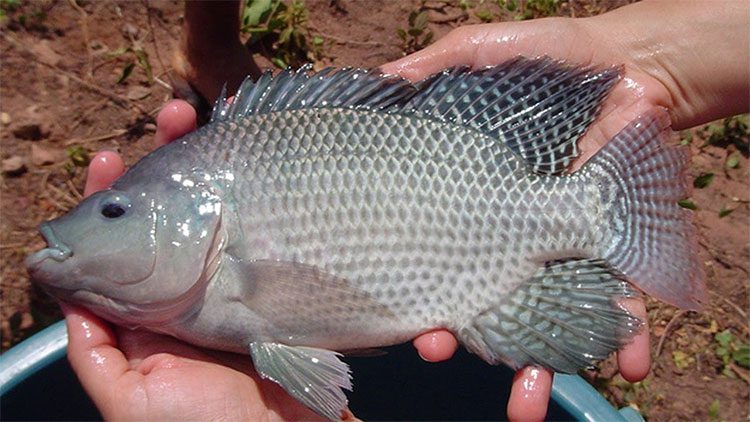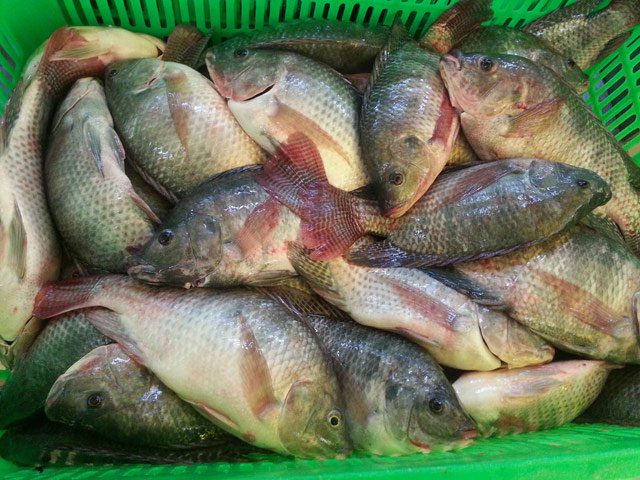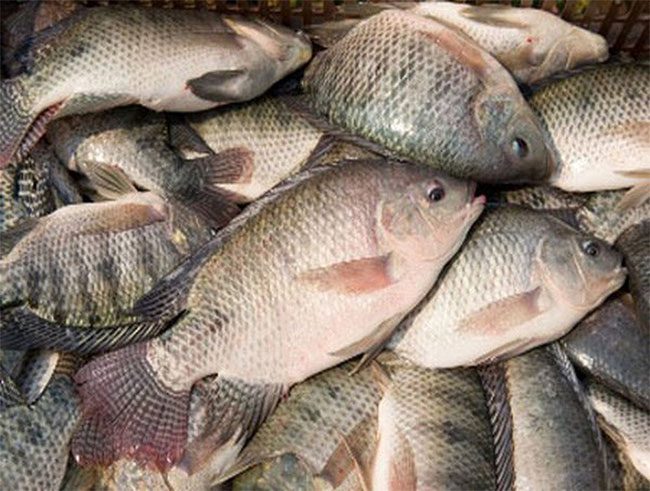Fish is always considered a top food source, providing many essential nutrients for the body. However, health experts warn of the health risks associated with tilapia.
Tilapia contains low nutritional value. Researchers from Wake Forest University School of Medicine have conducted a study and released a report about the omega-3 fatty acid content in various types of fish. Notably, tilapia has less fatty acid content than most other fish on this list.
Tilapia does contain various nutrients, vitamins, and minerals, including a significant amount of protein, fatty acids, selenium, phosphorus, potassium, vitamin B12, niacin, vitamin B6, and pantothenic acid… These nutrients are beneficial for growth and development.
Moreover, tilapia has an impressive protein content, accounting for over 15% of our daily needs, making this type of fish a popular choice for many.

Dangers of consuming tilapia raised in unclean environments.
However, most tilapia is currently farmed, with very little available in the wild.
In 2009, studies by the U.S. Department of Agriculture examined seafood imported from China and revealed that many farms in China are located in heavily polluted areas.
Most tilapia consumed in the U.S. today comes from farms rather than being caught in the wild. Farm-raised fish are often exposed to organic pollutants causing cancer more than 10 times than wild tilapia.
Furthermore, one of the main components in their feed is chicken manure and waste from pigs and ducks, which is quite common.
Fish are generally a crucial source of omega-3 for the body. Omega-3 benefits health by lowering blood pressure, reducing blood cholesterol, and boosting the immune system.
It also prevents arthritis, depression, heart disease, and even cancer. However, according to a 2008 study from Wake Forest University, tilapia contains much more omega-6 than omega-3 at a ratio of 11:1.
Scientists suggest that while omega-6 is also necessary for the body, the appropriate ratio with omega-3 should be 2:4.
If the ratio of omega-6 to omega-3 in fish exceeds 6:1, it may increase the risk of asthma, arthritis, and other inflammatory diseases in the body.
According to food engineer Ho Thu Thuy, regardless of aquatic vegetables or foods like snails, clams, including both farmed and wild tilapia, if they live in polluted environments such as heavy metal contamination, it poses health risks to humans.
This is because heavy metals, once entering the body, are not easily excreted and accumulate over time, eventually becoming toxic.
Therefore, if fish like tilapia are contaminated from their farming environment and end up as human food, it poses a significant threat to human health.
For Vietnamese families, tilapia is also a frequently used ingredient in meals. While tilapia contains many nutrients such as vitamins, minerals, protein, and essential fatty acids, recent research from a nutrition institute in the U.S. confirms that tilapia is a major health hazard for consumers.

Tilapia contains low nutritional value.
You May Be at Risk of Cancer
Many reports indicate that tilapia of unclear origin is raised using animal manure. They can increase the cancer risk tenfold compared to fish caught in the wild.
In 2009, economic studies by the U.S. Department of Agriculture (USDA) examined farmed seafood imported from China and revealed that many farms and food processing plants in China are located in industrial areas where air, water, and soil are polluted.
You might be consuming antibiotics, pesticides, and chemicals. Recently, tilapia has become more susceptible to diseases. Many farm owners have been providing antibiotics to help the fish avoid illness. While these chemicals are effective in keeping tilapia healthy, they are still harmful to human health when consumed.
Dibutyltin – a chemical used in the production of PVC plastic – can also be found in farmed tilapia. This toxic chemical is known for causing infections and weakening the immune system. It also increases the risk of allergies, asthma, obesity, and metabolic disorders.
Another toxic chemical previously found in farmed tilapia is dioxin. This substance is associated with the onset and progression of cancer and other serious health issues. Moreover, if one consumes food containing dioxin, it takes the body 7 to 11 years to eliminate it.
However, these are merely warnings and not all tilapia consumption is dangerous. The most important thing is for each individual to protect their health and that of their family by being cautious when purchasing tilapia, avoiding harmful farmed products from China or domestically, and consuming it in moderation to not increase the risk of illness.

If all the fish of the same type are similar, they are mostly farmed fish.
How to Choose Between Farmed and Wild Tilapia
Typically, farmed tilapia or other fish are raised in similar batches, meaning the fish are relatively equal in weight.
When looking at a seller’s container of fish, if all the fish of the same type are similar, they are mostly farmed. Since farmed fish are raised in smaller ponds, they swim slower and are not as robust as wild fish. Eating farmed fish can result in a mushy texture and an unpleasant odor.
In contrast, wild fish typically show varied sizes, with larger and healthier fish. Buyers can also consider geography; if the market is near rivers or streams, wild river fish may occasionally be available. Wild fish tend to have firmer texture and a more fragrant, sweeter taste.
Additional Notes
For safety when consuming, it is best to eat only the fish fillet, while discarding the head, gills, and even the entrails or belly. Tilapia has a very varied diet, even consuming waste from other animals, which is why tilapia’s belly is often dark and smelly. Therefore, we should avoid using these parts.
Experts also advise against consuming tilapia too frequently, suggesting alternating meals with other foods or types of fish to diversify one’s diet and dishes.
These recommendations from experts aim to help homemakers find answers to the question of whether consuming tilapia is harmful.
- “The Urine Love Story” of tilapia is one-of-a-kind
- Mexico studies the use of tilapia skin to produce high-end shoes
- Admire 12 beautiful “mummy portraits” from ancient Egypt dating back 2 millennia
- Mysterious inhabitants in space PRC 1 – Satellite designed to last only 20 days but lasted over 50 years
- “Pouring” 20 billion USD into the sea, Japan amazes the world with an seemingly impossible project



















































